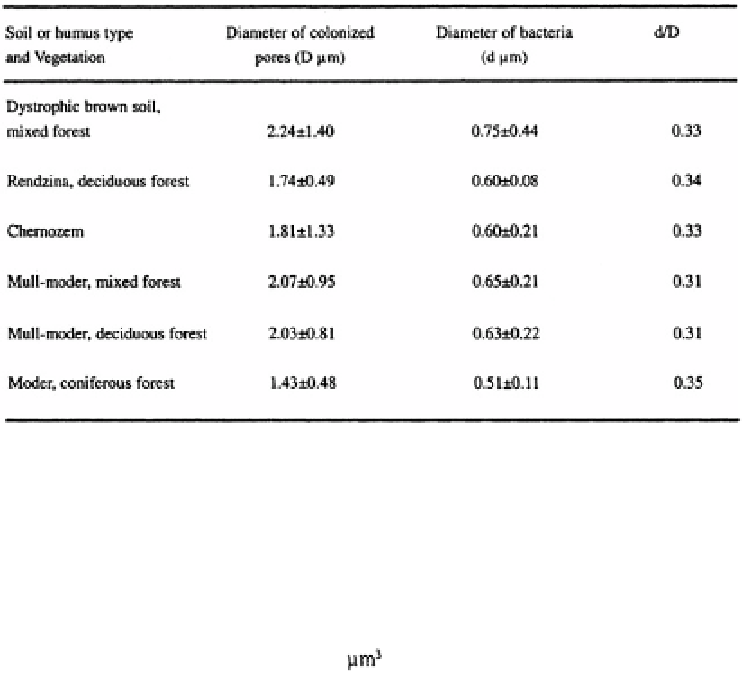Agriculture Reference
In-Depth Information
Within the aggregates, the microflora essentially consists of largely dormant
Actinobacteria and Gram-negative bacteria which exist there under buffered moisture
conditions, at times limited by oxygen supply (see Figure III.1 A). They occupy micropores
and may be released into the 'external' medium when microaggregates are disrupted
under conditions of high moisture or assimilable energy supply. In six different
temperate climate soil-vegetation associations, the average diameter of micropores
occupied by bacteria inside microaggregates, was 1.43 to 2.24 (Kilbertus, 1980;
Schwartz,1981). The ratio d/D of mean bacterial diameter (d) to the mean diameter of the
pores they colonise (D) was 0.33 on average, with remarkably little variation among the
six soils investigated (Table III .4).
Postma and van Veen (1990) have proposed the classification of soil porosity into
three categories based on the ability of pores to host bacterial cells of the genus
Rhizobium
and protect them from predators: accessible pore space that is large enough
to let micro-organisms enter, habitable pore space that comprises pores larger than 0.8
and protective space that is inaccessible to bacterial predators.
Bacteria rarely occur as isolated individuals. In a forested rendzina soil (mollisol), 90 %
of individuals were grouped in colonies of 6 to 300 individuals, most colonies having
ca.
10 individuals on average (Proth, 1978). Inside the microaggregates, an average
number of 0.8 bacteria was found per of pores colonised. Bacteria represented
0.29 % of the volume of the aggregate and the overall volume of the pores they colonised
was 6.21 %.
The above results are important in that they clearly demonstrate that potentially-
assimilable organic matter may be protected from microbial attack because of its location in
non-colonised micropores, or within non-porous microsites within aggregates (Foster, 1985).




